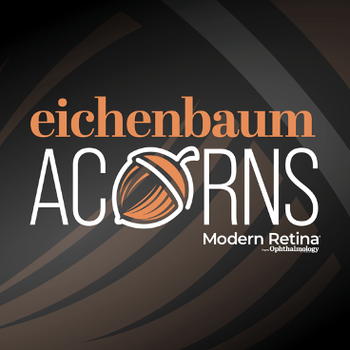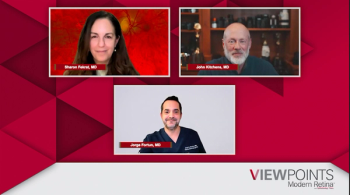
Evolving Approaches to GA Management in the Era of Complement Inhibitors
Panelists discuss how their management approach for geographic atrophy (GA) has evolved from a “come back in a year” mentality to actively offering treatment discussions within 2 to 3 months, with most patients showing interest in complement inhibitor therapy, particularly those with functional vision remaining who understand the progressive nature of their disease and have vision left to preserve.
Episodes in this series

The introduction of complement inhibitors has fundamentally transformed the management approach for patients with GA. Previously, encounters with patients with GA consisted of delivering discouraging news with instructions to return in a year as the disease inevitably progressed. Now, clinicians engage in active treatment discussions and schedule follow-up visits within 2 to 3 months to consider therapeutic intervention. This represents a paradigm shift from passive monitoring to active disease management, though the approach requires careful consideration as these are first-in-class treatments with ongoing safety considerations that the retina community continues to learn about.
Patient selection and timing of treatment initiation have become critical components of GA management. Most patients are now being offered treatment, with many arriving at appointments already interested in therapeutic options. The approach typically involves providing educational materials for patients to review at home, often with family members or caregivers present to provide additional support and serve as extra listeners during complex discussions. Patients frequently schedule earlier follow-up appointments when they’re ready to begin treatment, demonstrating enthusiasm for available interventions. The decision-making process allows patients time to process information and consider the ongoing nature of treatment while maintaining flexibility to experience therapy and adjust treatment cadence as needed.
Treatment discussions are tailored based on patient-specific factors, including functional vision status, lesion characteristics, and symptom awareness. Patients with significant central vision loss and large lesions without functional vision typically do not receive treatment recommendations. Conversely, completely asymptomatic patients with small lesions may be monitored for several visits before treatment consideration. The optimal candidates are those with functional vision who understand their progressive vision loss and have remaining vision worth preserving. This population, which represents a significant proportion of patients with GA, benefits most from prompt treatment discussions and earlier follow-up scheduling to initiate therapy.
Newsletter
Keep your retina practice on the forefront—subscribe for expert analysis and emerging trends in retinal disease management.












































